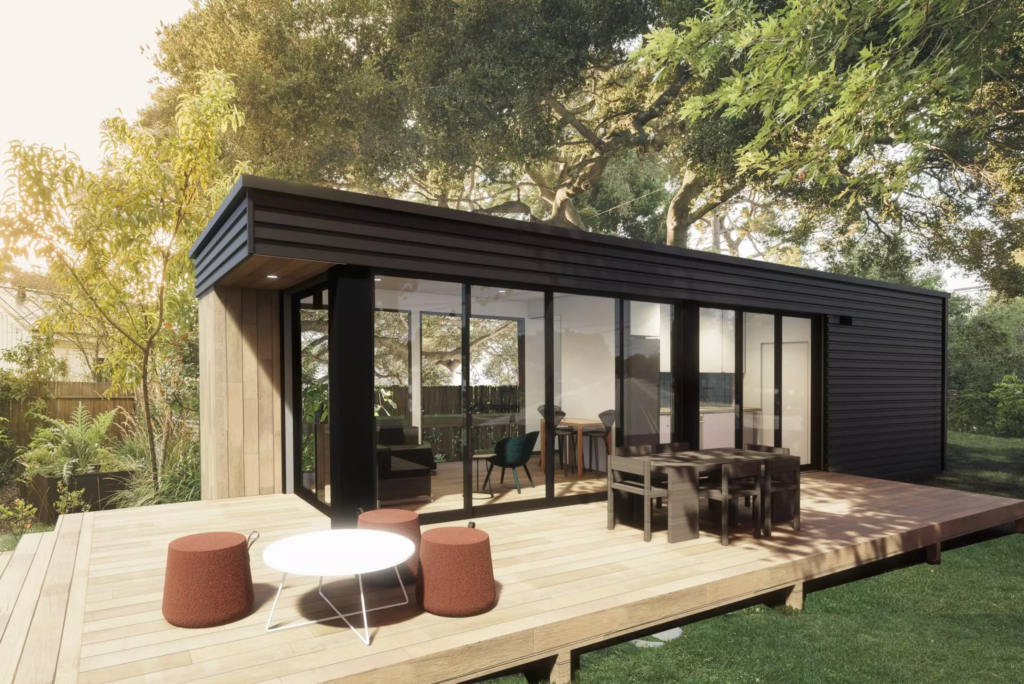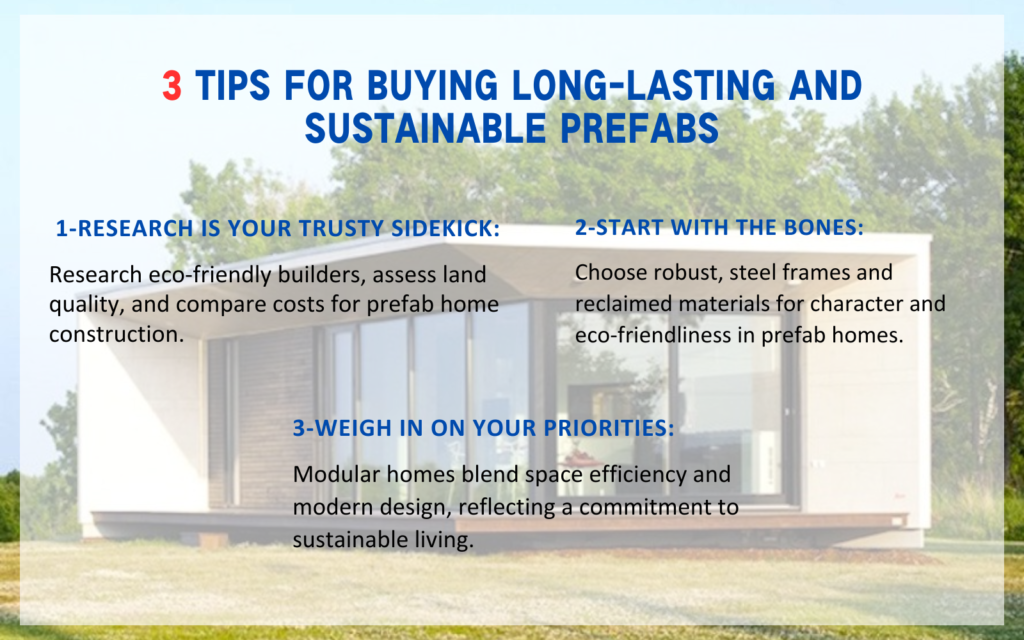Behold, the future of home construction—Prefab houses, where innovation meets efficiency to create dwellings that challenge traditional norms. The sustainability of prefabs are ground-breaking. They owe this advantage to their off-site construction process. Besides consuming the least construction time possible, the pre-fabrication process warrants zero damage to the unit since it occurs in a controlled factory environment.
If you’re contemplating the idea of making a prefab house your home sweet home, you might find yourself pondering a pivotal question: How long can a prefab home last? Let’s embark on a conversational journey through the durability, resilience, and enduring charm of these modern architectural wonders.
How Long Can a Prefab House Last?
A prefab house can last for 3-6 decades. However, the truth of the matter is more complex than we think. After all, the longevity of a prefab home, besides its inherent quality, depends on various factors like maintenance, upkeep, and level of sustainability.
As such, future real property values of prefabs are naturally ambiguous. Researching the property market behaviors help homeowners secure their long-term investment on the home.
Before we dive into the longevity of prefab homes, let’s get to know them a bit better.
What is a Prefab Home?
Prefab, short for prefabricated, is a construction method that involves assembling various components off-site and bringing them together at the final location. It’s like putting together a giant puzzle to create a home that is not only structurally sound but also built with efficiency in mind.
The Myths We Bust
There’s a common misconception that prefab homes lack the durability of their traditional counterparts. Let’s debunk that myth right away. The longevity of a prefab home is not a matter of the construction method but rather a result of the quality of materials, craftsmanship, and adherence to building standards.
Quality Matters from the Ground Up
The foundation of any enduring home is, quite literally, its foundation. The same goes for prefabs. The durability of these modern abodes begins with a well-designed and properly constructed foundation. Just like any home, a solid base sets the stage for a long and stable lifespan.
What materials are prefabs made of?
Prefabs come in various materials, each with its unique characteristics. Steel, wood, concrete, and eco-friendly composites are just a few options in the prefab palette. The longevity of a prefab home depends significantly on the quality of these materials and how well they stand up to environmental challenges.
Facing the Elements
How well a prefab stands up to Mother Nature’s whims plays a crucial role in determining its longevity. Robust insulation, weather-resistant cladding, and durable materials are the superheroes that protect prefab homes from rain, wind, snow, and the occasional hailstorm. It’s not just about looking good; it’s about standing strong in the face of whatever weather comes its way.
Prefab vs. Traditional Longevity Showdown
Let’s put the prefab vs. traditional longevity debate to rest. Both construction methods can yield homes with equally impressive lifespans. The key is the quality of the build. A well-constructed prefab house can stand tall next to its traditionally built counterpart, proving that durability knows no construction boundaries.

Maintenance Mates
As with any home, regular maintenance is the secret sauce for a prefab house’s long and happy life. From routine inspections to addressing minor repairs promptly, regular TLC ensures that your prefab haven remains as resilient as the day it was assembled. It’s not just about fixing things when they break; it’s about proactive care that keeps the home thriving.
Case Studies in Prefab Longevity
Let’s take a stroll down memory lane and explore a few real-world examples of prefab homes that have stood the test of time. From the post-war charm of Lustron Homes to modern prefab dwellings in earthquake-prone areas, these case studies highlight the enduring nature of well-crafted prefab structures. It’s like a history lesson in architectural resilience.
Sustainability as a Sidekick
Prefab houses often come with an environmental bonus. Many are designed with sustainability in mind, boasting eco-friendly materials, energy-efficient systems, and a reduced construction footprint. This commitment to green living not only benefits the planet but also contributes to the long-term viability of the structure. It’s a win-win for you and Mother Earth.
Future-Proofing Prefab
As technology and construction techniques continue to evolve, the future looks bright for prefab homes. Advances in materials, innovative building methods, and cutting-edge energy-efficient technologies contribute to the ongoing enhancement of prefab durability. It’s not just about keeping up with the times; it’s about staying ahead of them.
3 Tips for Buying Long-Lasting and Sustainable Prefabs
The tips for buying long-lasting and sustainable prefabs are as follow:
- Research is your trusty sidekick: Conduct a research on the most trusted companies and explore builders committed to the eco cause. Determine the quality of the land you are planning to construct your prefab home in. Make comparisons on costs– construction, assembly, installation, and customization.
- Start with the bones: Go for robust materials and steel frames. Also, do not ever shy away from using reclaimed materials. Reclaimed wood adds character and eco-friendly flair. Navigate the prefab jungle with a keen eye for energy efficiency and green certifications.
- Weigh in on your priorities: Modular aesthetic unveils space-efficient wonders, while cutting-edge designs redefine contemporary living. In this dance between aesthetics and conscience, your prefab journey isn’t just a purchase; it’s a commitment to a durable, sustainable haven that echoes your values and shelters your dreams.

Conclusion
So, how long can a prefab house last? On average, it can last for 3-5 decades. However, it’s not as simple as it goes, as it depends on various factors, from construction quality and materials to ongoing maintenance and innovative design. Prefab living is not just a trend; it’s a movement towards homes that stand the test of time with grace and resilience.
As you consider the idea of embracing prefab living, rest assured that you’re entering a realm where durability and innovation coexist. With the right care and attention, a prefab house can be a timeless haven for generations to come. It’s not just a home; it’s a journey into a future where modern living is as enduring as it is exciting.
So, if you’re ready to explore the world of prefab, buckle up for a ride into a world where homes are more than just a shelter—it’s a testament to the enduring spirit of modern living.
Looking for quotes on prefab homes? Visit us at Space Capsule House today!


